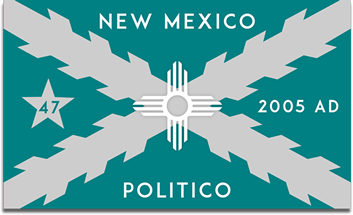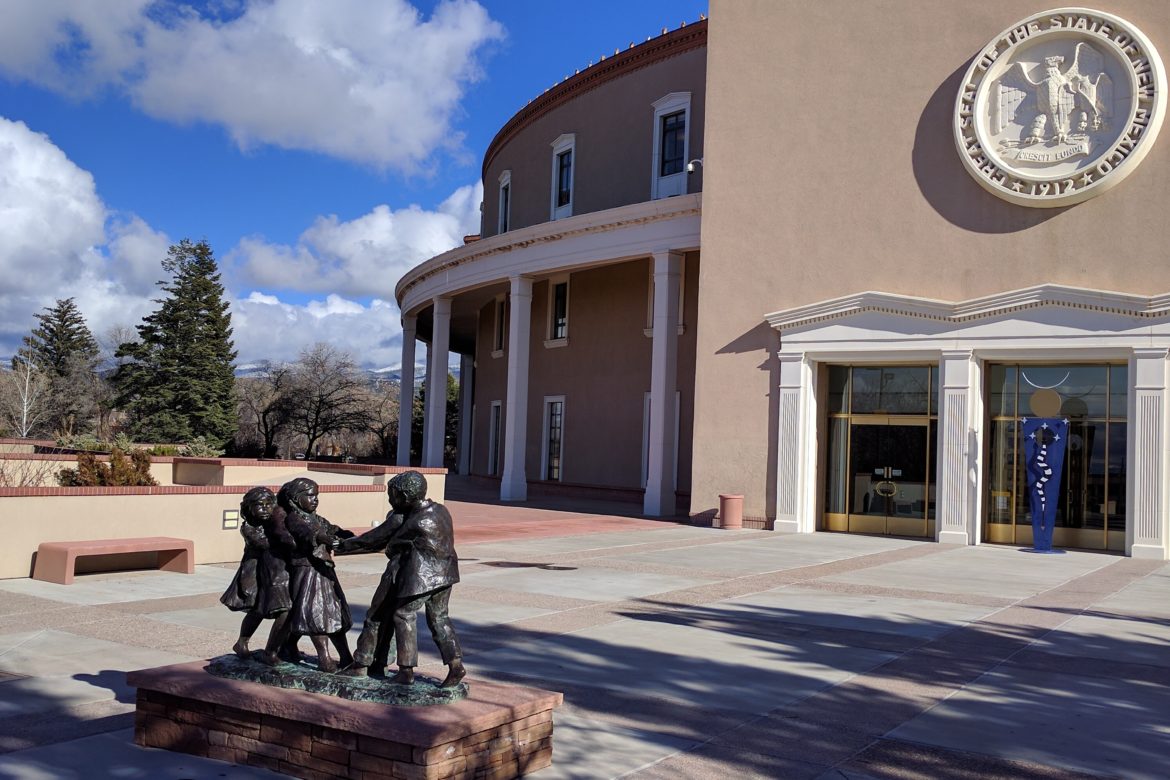Santa Fe – The second session of the 54th Legislature kicks off Tuesday at noon and will end after thirty days on Thursday, February 20th.
The frenetic oil boom in “Little Texas” continues and has state bean counters forecasting around an $800 million surplus above current budget obligations, even after Governor Michelle Lujan Grisham and her allies increased spending by nearly $700 million (roughly 11 percent) in the 2019 legislative session.
But the honeymoon enjoyed by the governor and her fellow Democrats after the blue wave of 2018 has been showing signs of fading and was seemingly brief. A recent Emerson College poll revealed Lujan Grisham with a 38% approval rating, which notably was actually a point under President Trump’s 39% approval rating – in a state that in recent history has been trending more Democratic. While clearly within the margin of error, the poll is just the latest to confirm a trend of low approval ratings of the newly minted governor, unusual for a governor only in the second year of her first term.
The lower than normal approval rating is at least partially explained by a growing divide between the politics of rural and urban New Mexico. Unlike her Republican predecessor Susana Martinez, who was largely consistent in campaigning and governing as a conservative, Lujan Grisham campaigned as a moderate (a self-described “fiscal conservative”) but has governed and advocated for policies found only on the wish list of her progressive allies, alienating her more moderate supporters.
Combined with unflattering headlines that mention the state’s out of control crime (such as once again topping the FBI list for most stolen cars), a growing homeless problem (a recent report identified New Mexico as having the largest increase in homelessness in the country last year), and a stagnant economy it is unsurprising to find the voters of New Mexico restless and unhappy with those in power.
Given this political environment the governor has decided her best strategy is to double down. Earlier this month the governor revealed her roughly $7.7 billion spending plan that would further increase state spending by almost $600 million (about 8.4 percent) on top of last year’s increased budget level. Her budget announcement tagline of “investing for tomorrow and delivering today” is a marketing gimmick that rings hollow when you realize that apparently the only way the governor and her allies believe our state’s problems can be fixed is by throwing more money at them. To her credit however, her proposal to overhaul the underfunded pension system for public employees is a much needed step in the right direction.
The doubling down strategy that is driving the agenda in this year’s legislature is due to 2020 being an election year, meaning all 112 members of both the Senate and the House of Representatives are up for reelection – including the influential coalition of moderate Democrat senators that have not fallen completely in line with the progressive agenda in charge in the House and the fourth floor. By trying to limit the session agenda to a relatively small number of high-profile bills (including wedge issues such as red-flag gun legislation), the governor and her allies are looking for key votes that can used for the purposes of removing those in the way of the governor’s agenda. Most if not all of the conservative coalition of Democrat senators are facing well-funded and well-organized progressive challengers who are looking for ammunition to use in their primary races.
The Legislative Finance Committee’s (LFC) and the governor’s budget plans have some important similarities and differences (both plans serve as guides for lawmakers as they craft a final budget for the new fiscal year), though the LFC’s 6.5% increase is less than the 8.4% requested by the governor.
Both plans call for creating an early childhood trust fund through an endowment that would pay out investment returns instead of relying on recurring tax revenue for funding. This is seen as a workable compromise between those calling for greater spending in early childhood education and those calling for more fiscal restraint, but nonetheless expect to see key votes attempting to pressure officials for greater spending amounts. Both plans also include varying increases in teacher pay, increased funding to school districts with large population of low-income students, and maintaining state reserves equal to about 25% of state spending.
The differences in the two budget plans mostly reveal a governor attempting to burnish her low approval rating with populist spending proposals that provide her with talking points she can use to show her working class bonafides that, while ostensibly well intended, are intellectually lazy attempts at serious public policy, such as her push for providing tuition-free college to state residents.
Some of the bills and other Roundhouse activity worth noting:
- As mentioned before, while a compromise is expected to produce an endowment for early childhood education there will be pressure on the Senate from the House and other outside groups for more money. The efforts will fail but do not be surprised to see those votes in opposition in campaign mailers during primary races later this year.
- The governor and her gun control supporters will once again push to pass a red flag law, even during a short 30 day session. Once again the House will send some version of the legislation to the Senate, who will be under tremendous pressure to support it. Similar to early childhood education funding expect any votes in opposition to be used as campaign fodder later this year.
- The push for marijuana legalization will continue this session. Last week the governor formally announced her support of legalizing recreational marijuana, promoting it as “the largest job-creation program in New Mexico in a decade.” Though polling has continuously shown majority support for legalization, the Senate has not shown any change in support following their opposition that killed similar legislation last year.
- With Republicans in the smallest minority in recent history they are not in a position to control much of the legislation coming out of the Roundhouse this 30 day session. Nevertheless they are making the most of their reduced status by proposing legislation that, while not having any chance of being passed into law, can contrast themselves with the majority party. Such an example is the “Taxpayer Bill of Rights”, legislation that would make it much more difficult to raise taxes. While the bill is unlikely to even have a committee hearing, it does offer a counterpoint to the constant spending increases coming out of Santa Fe: in the event of a budget surplus as seen in the last budget years, the bill would automatically send excess tax revenue to New Mexico residents as a rebate check.
- Proponents of renewable energy continue to flex their influence in the Roundhouse. The renewable agenda has such control over the Roundhouse that a Democrat Senator actually had the audacity to propose a four year ban on fracking in a state where oil and gas generate 39% of the state’s income. However some of the most impactful energy related legislation is seen as the push to reform the Public Regulation Commission (PRC) which regulates utilities. Advocates of the Energy Transition Act (ETA) that mandated the use of renewable energy in New Mexico are unhappy with the PRC’s handling of the law’s implementation and passed a resolution proposing a constitutional amendment that will be on the November ballot later this year, changing the PRC from elected commissioners to commissioners appointed by the governor.

